Wargames can be daunting and it’s not without cause. From the outside, the piles of information-laden counters and detailed hexagon maps can turn people away. Wargames have a reputation for catering to a well-established audience, and while there are plenty of games that are approachable, the monstrous simulation games tend to snag the spotlight. Wargames are a niche market within the (admittedly growing) niche market of board games, so it makes sense that companies and designers might stick to their clientele. But that means there’s a pile of terms, design fundamentals, and understood norms that build a barricade around new player entry. Better adjust that Combat Resolution Table (CRT) in favour of the defender and get ready to attack, because we’re diving in!
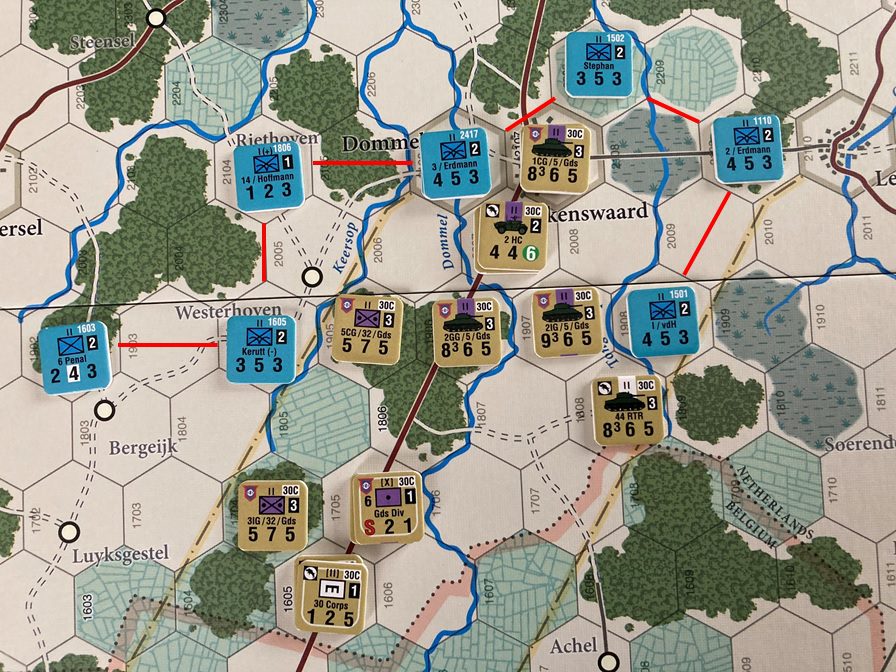
In recent years there has been an explosion in innovative wargames. These games often try to capture the spirit of the conflict they’re simulating in a new or different way, or else try and deal with common wargaming issues, like command and control, with innovative mechanics. There are now plenty of engaging entry level games to play once you’ve gotten to know what’s out there and many of these innovative games borrow familiar board game mechanics.
This guide is meant to help those who are interested in playing wargames, but who may be put off by the perceived intensity of conflict simulation, to wet their feet using mechanics they already know. This is a golden age for board wargaming and my goal is to pique your interest for all sorts of wargames. If you find yourself enjoying the games on this list, and the idea of focusing on the narrative of a conflict is up your alley, I would heartily recommend jumping into more traditional fare. They might not always be for you, but then again, after a few gateway games, you might find yourself getting sucked into a 10 hour session of Cataclysm: A Second World War.
Without further ado, let’s take a look at some of these popular mechanisms that can be found in the wargaming world.
Deck Building
The number of deck building games is on the rise, and for good reason. There’s something incredibly satisfying about seeing your paltry deck grow and synergize as you add and remove cards. I’ve always been more of a fan of deck builders that use their cards as part of a wider game or else directly promote competition. Trains, Clank, and Star Realms remain some of my favourites. 2019’s Undaunted: Normandy and its sequel Undaunted: North Africa have quickly claimed positions alongside those games by combining small scale tactical combat with a solid deck builder.
In Undaunted, players take command of a platoon or squad of soldiers carrying out objectives in World War Two scenarios. The history is there, with Normandy following A US Infantry Platoon’s D-Day struggles and North Africa focusing on British Long-Range Recon Patrols. Instead of directly moving tokens representing squads, support weapons and vehicles around the modular map, players must use an ever-changing deck of cards.
Cards consist of officers, squad members, or useless fog of war cards. Each has a familiar deck-building mechanic attached. Officers allow you to add or remove cards from your supply, draw more cards, or give additional actions. Squad cards allow you to activate and use your tokens on the map, and fog of war cards are useless filler cards that can quickly clog your deck.
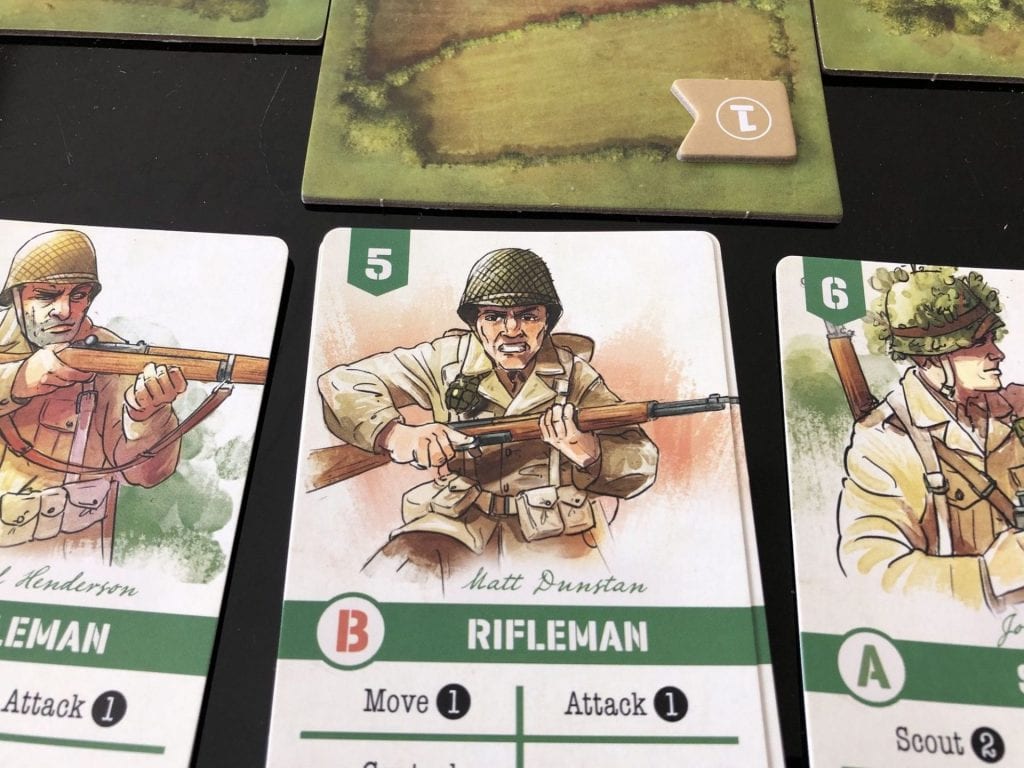
The marriage between deck building and tactical combat is genius. You need to activate scouts to be able to advance deeper into the map, but doing so adds fog of war cards which represent the gradual loss of command and control as your platoon engages in combat and spreads out over the battlefield. Squad cards can activate units, but taking fire removes these cards from the game. Not only are you seeing individually named squad members fall, but you are also lowering the total number of cards that can activate that squad, limiting its effectiveness and simulating suppression.
The actual combat comes intuitively, with machine gun teams offering suppressing fire and rifle teams taking ground. I applaud the way that Undaunted allows both those familiar with the basics of squad level wargames and those who play deck builders the chance to use their skills to succeed. Both versions offer similar gameplay, but differ in their scale and scope. Normandy offers platoon level engagements focusing on groups of men, while North Africa brings the scale down to the individual and focuses on special forces missions. It also slightly ups the difficulty. Undaunted might be a good first step towards some heavier, but just as entertaining, tactical games like Combat Commander or, if you dare, Advanced Squad Leader. I still haven’t made that final jump myself.
Bluffing
A lot of wargames rely on secret information. Dealing with the fog of war and a lack of accurate reconnaissance has been part of waging war for as long as we’ve been at it. While many traditional wargames forgo hidden information in exchange for other randomizers, there is a dedicated branch of games that rely on hiding certain key characteristics, like the actual strength of a combat unit, to reflect this reality.
The majority of these games are block wargames, like Worthington’s Holdfast series or Columbia Game’s aptly named Columbia Block Game Series. These are both excellent series and good stepping stones for new wargamers, but I want to highlight a game that forces you to become a cool-headed master of deception to win.
Sekigahara: The Unification of Japan chronicles the final major campaign of Japan’s Warring States period in 1600 (if you don’t count Osaka 15 years later). Sekigahara uses wooden blocks to obscure combat units like the games above but combines that with an innovative card system. If you don’t have the correct card, you can’t activate that particular combat unit. As forces are limited, the game quickly becomes a push your luck game of maneuver. Positioning your forces aggressively might force the enemy to fall back, regardless of the fact that you held none of those units cards! Knowing when to call your enemy’s bluff and when to step back are key components of wrangling a victory in Sekigahara.
To add another level of intrigue, Sekigahara includes traitor cards. These cards represent the shifting loyalty and different connections local lords maintained with each other. Playing the right card at the crucial battle might see some of your enemy’s forces joining you to turn the tide. In play, this adds another level to the game and forces you to consider whether or not you can actually trust that force you hope will win the next big battle.
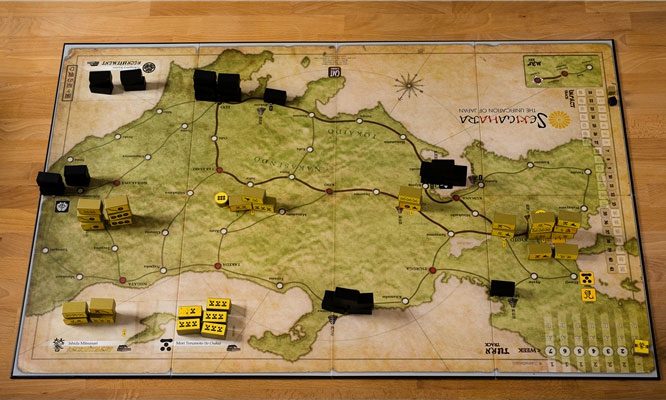
To top it off, the actual rules that govern fighting and maneuvering troops in Sekigahara aren’t that complicated, with a slim and easy to understand rulebook. This makes it a good game to test the waters with and put in to practice all the straight up lying you honed during those games of One Night Ultimate Werewolf.
Traitor Mechanics
There are a lot of games that rely on traitor mechanics to drive the tension and enjoyment. Players can insist they’re human in both The Thing and Battlestar Galactica, or ditch their friends to survive alone in Dead of Winter, Nemesis, or The Menace Among Us. These same tossing-friends-to-the-wolves skills can be transferred to a number of multiplayer wargames.
The historically inclined might be quick to point to Frederick and its successor Maria as excellent examples of multiplayer wargames that have individual victory conditions, but I believe Dune, now widely available thanks to its recent re-release, is the perfect gateway game for this mechanic, and an excellent board game all around. Dune’s widely asymmetrical factions, various win conditions, and fluctuating alliances will have you stabbing several backs in quick succession. If you can pull the knives out of your own back, that is.
While there may not be a traitor mechanic in the specific sense of a player within a team defecting, the possibility of players negotiating alliances that come apart as quickly as they form in Dune is a major draw of the game. It relies on the same ability to lie to your friends while looking them dead in the eye that you’ve honed in other, smaller games. Different factions offer access to different bits of information, and information is king in war and Dune. The Harkonnen might know who your traitor generals are, while the Fremen can accurately gauge the flow of the storms. Teaming up for an entire game is entirely possible, but so is kicking your ally to the curb right as you’re about to snag that individual victory.
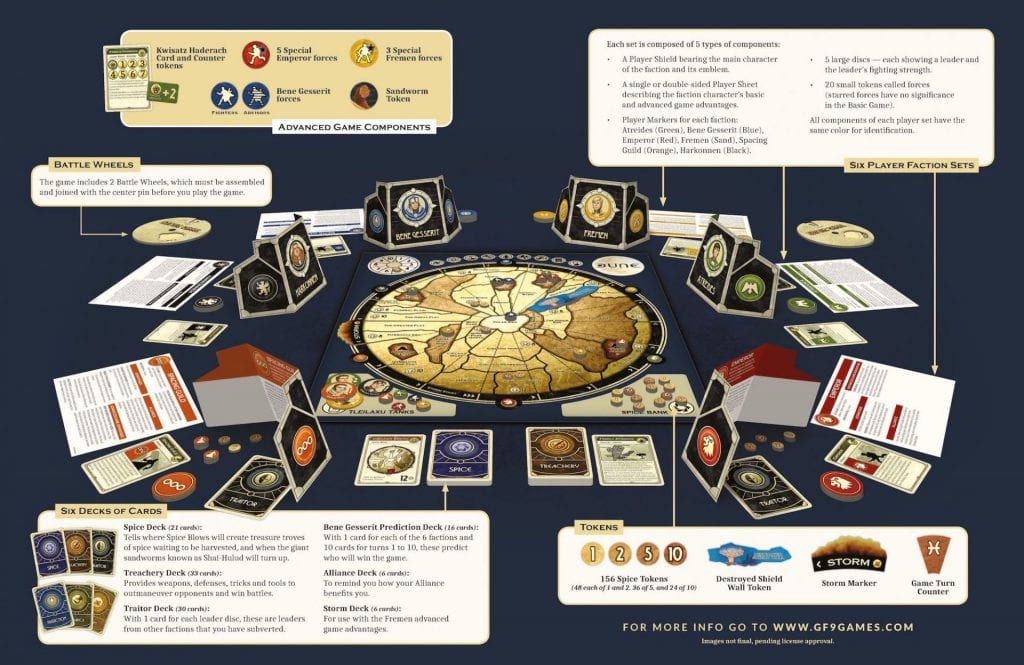
It helps that the mechanics of warfare in Dune are very playable. Combat consists of committing forces to a fight using a secret dial. Every unit committed will die — how much are you willing to sacrifice to secure a win? Adding commanders and special weapons to a fight ramp up the uncertainty, and relying on faulty information might catastrophically result in a laser-on-shield induced nuclear explosion. Dune is an excellent multiplayer game and a great gateway into the world of individual victory condition wargames and games of shifting alliances. Just be ready for that jump to Diplomacy. You might never come back.
Area Control or “Risk but Fun”
Risk is one of those games that everyone’s played but few will admit to enjoying. I’m down for a flavoured Risk here and there (still hunting for a copy of Risk: The Elder Scrolls V – Skyrim!) but its simplicity and reliance on the randomness of dice without appropriate modifiers drive people towards more complicated and interesting modern board games. Some might suggest Axis and Allies as the natural upgrade to Risk, but I feel Axis and Allies suffers from a similar issue of randomness coupled with an often egregious playtime. I submit War of the Ring: Second Edition as the natural successor to Risk’s entry level.
War of the Ring brings J.R.R. Tolkien’s sweeping epic to the table by simulating both the Fellowship’s journey from Rivendell to Mount Doom, and the continent-wide war between the Free Peoples and the servants of Mordor. Players will dodge the Balrog in Moria, battle over Minas Tirith, and also fight seldom seen engagements like the northern battle against Angmar and the clashes around the Lonely Mountain.
Familiarity is the key here. Even if you haven’t read the books, Peter Jackson’s trilogy of films are classics and widely watched. Knowing the basics of the story goes a long way to reducing analysis paralysis and allows players to get into the narrative as it develops along a divergent path.
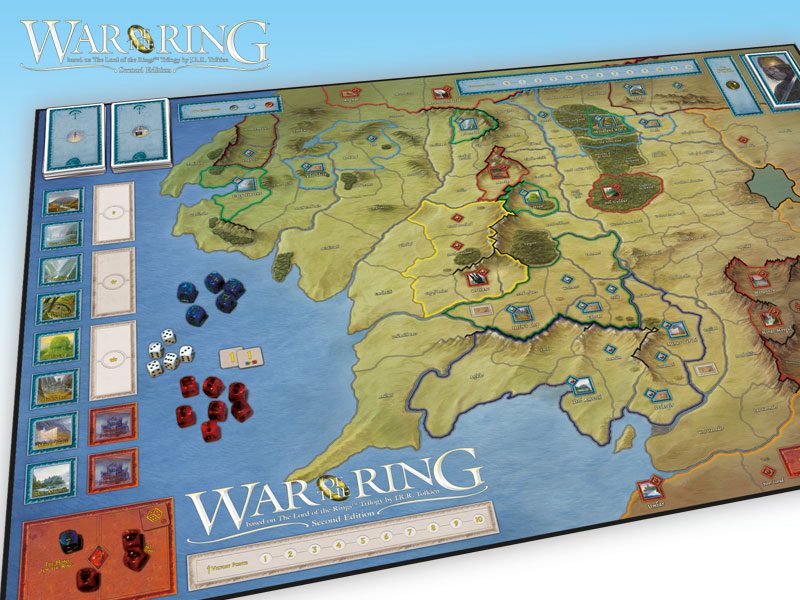
The military control is familiar, with units moving from space to space when activated and rolling dice, trying to achieve a certain value to score a hit in combat (one that can be modified by heroes, special cards, and certain terrain.) Siege battles dominate, just as in the source material, but the minis, map, and cards are beautiful and readable. Simplicity does not mean War of the Ring lacks depth. Limited activations, a plethora of strategic choices for both sides, and the actual journey to Mordor add weight to the quick moving battles.
War of the Ring will make for an easy stepping stone towards historical area or point-to-point wargames that require less management of the fantastical, but the same level of consideration for maneuver and consolidation of force.
Conclusion: Try Something New
There is a wide world of wargames out there covering almost any conflict, real or fictitious, and most of them are a blast to play. The daunting barricade of hexes and counters that surrounds wargames can be easily toppled with the smallest application of force, freeing you and your gaming group to test friendships in entirely new ways. These wargames were some of my favourite applications of familiar mechanics, but they’re only the tip of the iceberg. I’d love to hear what entry-level wargame got you into the hobby, so comment below!
Joe











May i suggest Time of Crisis; a light deckbuilding / wargame hybrid that is fun to play. Academy Games 1775 Rebellion (and its siblings) are also good light wargame.
The Academy Games Birth of America series is excellent. I even managed to get some colleagues at the university who never touch games to play 1812 with me a couple of times. It was a big hit, especially with the team discussions. Time of Crisis is also on my list of games to grab!
Excellent. When I read the title the first three games that came to mind were
Twilight Struggle – the highest ranking wargame on BGG
Root – uses the COIN system, won all those awards and fooled many into playing a wargame
Game of Thrones – an easier variant of Diplomacy
But, I like your four much better. And I’m happy to see Dune reprinted and made available to many more fans. I can’t think of many games that are better for 6 or 8 players (we used the old Avalon Hill expansion for Ixian and Lansraad). It was a stable every year at a local convention.
My previous comment needs punctuation. I tried to have the 3 games on 3 separate lines. And the last comment should be in its own paragraph. Doesn’t make sense all in one paragraph.
It came out fine on my end!
I love your picks too. Root especially is good at introducing some wargame elements in an approachable way. The Game of Thrones board game does capture that Diplomacy atmosphere, but in my experience takes about as long to play 😀